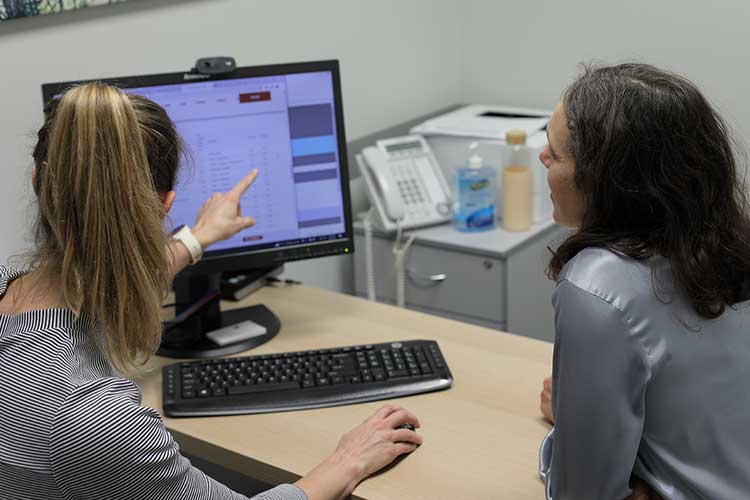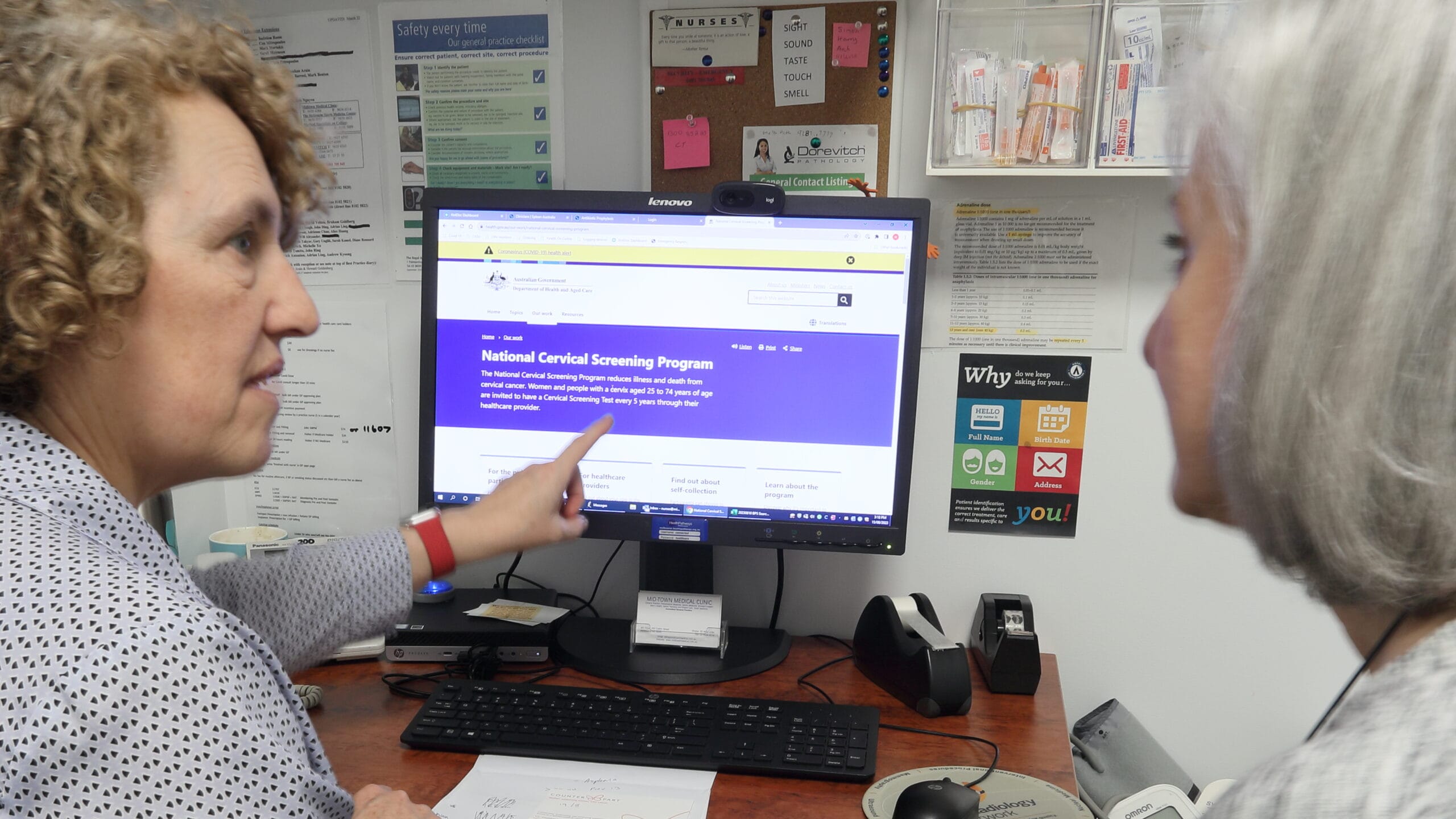Cervical Screening

Cervical Screening Services
The cervical screening test is a test that is conducted on a five-yearly basis to determine whether a person with a cervix has a human papillomavirus (HPV) infection of the cervix (which is the cause of cervical cancer), and whether that virus has generated abnormal cervical cells, indicating the precursor to cervical cancer.
Any sexually active woman or person with a cervix should get a cervical screening test, either five years after she becomes sexually active or at the age of 25. A woman who has never been sexually active does not require screening. The term sexual activity includes non-penetrative sex and sex between two women.
Cervical Screening services are available through the caring Women’s Health GPs at Healthcare on Collins.
How Cervical Screening is Performed
There are currently two options for cervical screening available in Australia.
- Self-collection sample: a woman self-administers a vaginal swab, which is then sent to a laboratory to detect the presence of HPV. If HPV is detected, she will need to undergo a clinician-collected sample. However, if the test is negative, she will only be required to take another self-administered test five years later.
- Clinician-collected sample: some women prefer to have a clinician perform the collection for them. In this case, a small plastic instrument called a speculum is inserted into the vagina, slightly opened to enable the clinician to view the cervix. A sample is taken from the cervix to test for HPV and assess the health of the cervical cells.
A limitation of the self-collection method is if the woman fails to insert the swab far enough into the vaginal canal and the test is deemed to be a failed test.
However, the distinct advantage of the self-collection method is that women who would otherwise not participate in screening now have a method that is much more acceptable to them.


What Happens After the Cervical Screening Test
After the cervical screening test, the sample is run at a lab to determine whether there is HPV present.

Negative results
If there is no HPV present, the patient will be asked to return in five years to repeat the test.

Positive results
If HPV is detected, then the lab will perform a test called reflex cytology, which means they use the same sample to look at the cells of the cervix to determine if those cells are being affected by the virus.
If the cells are starting to become abnormal or have developed into the precursor to cervical cancer, then the woman will be asked to see a gynaecologist for a further assessment using a procedure called a colposcopy.
When is the Right Time to
Book a Cervical Screening Test?
The right time to book a cervical screening is when a sexually active woman has turned 25 or when she has been sexually active for five years.
Women need to understand that cervical screening is an activity done for women who have no symptoms and is a way of detecting a disease before symptoms of that disease develop.
It is important to understand that if a symptom that causes concern such as new and irregular/unusual bleeding or discharge develops, even if a cervical screening test has been done recently, the patient should re-present to have the tests repeated.
Your compassionate Women’s Health GP will provide you with the healthcare you deserve. Our friendly administration team looks forward to your enquiry!
Call Us
(03) 9650 4284

FAQ
Do I pay the full doctor’s fee for cervical screening or is this rebated by the government?
When you attend to see your GP to have your cervical screening test done, a fee to consult with the doctor applies.
The cervical screening test, however, is fully rebated by the Medicare Benefits Schedule (MBS) provided that you are not attending more frequently than every five years for normal tests or are participating under the required recall from the result of your previous test.
For example, slightly abnormal tests will often result in a recall at 12 months and if a woman is representing for a recall, then the test will be covered by the MBS also.
In what ways does Healthcare on Collins collaborate with cancer registries?
Unless requested otherwise, all of our samples are stored on the cancer registry so that women can be tracked in terms of their screening activity and recalled to participate on a five-yearly basis.
If they do require treatment, the results are kept in a central repository of information. That way if women do move around the country, there’s always access to their cancer screening history.
Healthcare on Collins is a cervical screening provider listed on the Cancer Vic website.
If I've had the HPV vaccination, does this eliminate the need for regular cervical screening?
No.
While the HPV vaccine covers several HPV subtypes including some of the dangerous subtypes, it is not possible to vaccinate women against every type of HPV.
Because of that, women who have ever been sexually active continue to require screening.
For individuals who have undergone a hysterectomy, is the screening still necessary?
The vast majority of hysterectomies does include removal of the cervix. Once the cervix has been removed, cervical screening is no longer required.
However, if a woman who has had a hysterectomy develops symptoms of unusual bleeding or discharge, she still requires an assessment by GPs to do a test referred to as a vault smear.
A vault smear is a swab taken from the vaginal vault (which was constructed by her surgeon) to check for the presence of HPV or the development of abnormal cells of the vaginal wall.
